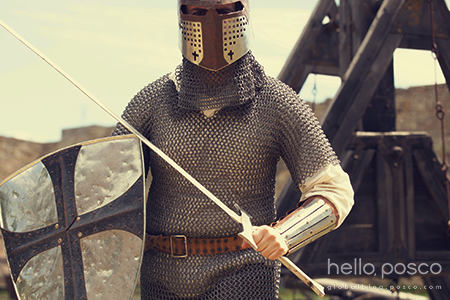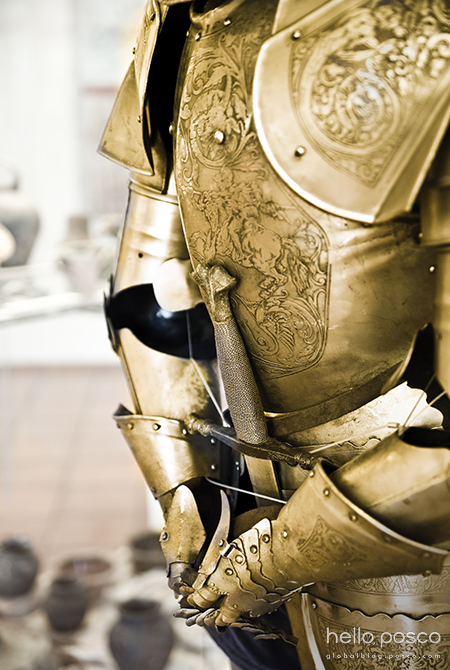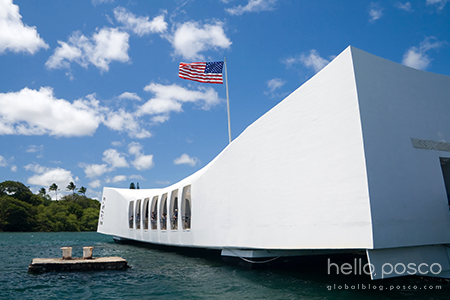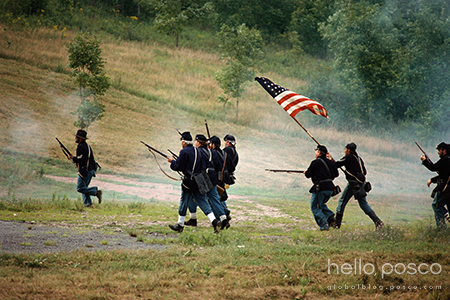The human capacity to change mineral ores into useful materials has unquestionably shaped civilization as we know it, particularly in terms of warfare. In the past, societies armed with advanced metal technologies almost always had the upper hand in battle and of all the materials utilized, steel has played one of the most vital roles. Steel has been a primary material for weaponry, for defensive armor and has even been the catalyst of some wars. Read on to find out more.
Maximus Steel: The Scissor
 It’s not surprising that steel has always been a predominant material in the production of weaponry, from long-bladed knives to rocket launchers. Of them, perhaps the most unusual device made from steel is that of the scissor. This peculiar object was most notably used in the arenas of the ancient Roman Empire by gladiators who were referred to by the same name.
It’s not surprising that steel has always been a predominant material in the production of weaponry, from long-bladed knives to rocket launchers. Of them, perhaps the most unusual device made from steel is that of the scissor. This peculiar object was most notably used in the arenas of the ancient Roman Empire by gladiators who were referred to by the same name.
Made from hardened steel, the scissor measured approximately one and a half feet long and weighed in at a surprisingly light three kilograms (six and a half pounds). At the bottom of the weapon, metal casing formed a long tube that covered the warrior’s forearm, enabling the weapon to conveniently block, parry and counterattack easily and efficiently. As the Romans enjoyed novelty and inventiveness in the arena, the scissor’s distinctive shape and design made it a crowd favorite.
Suits of Steel
 Plate armor has long been used in warfare, beginning with the ancient Greeks and Romans. By the late Middle Ages, complete suits of plate armor had been developed. A single suit made from well-tempered steel weighed approximately 15–25 kilograms (33-55 pounds), but because the weight of the armor was spread evenly throughout the body, the wearer remained highly agile and was able to move freely. So much so that it was not uncommon for the majority of an army to fight on foot wearing full plate armor next to archers and crossbowmen. This was especially commonplace in the Western European armies of France and England during the Hundred Years War, the Wars of the Roses and the Italian Wars.
Plate armor has long been used in warfare, beginning with the ancient Greeks and Romans. By the late Middle Ages, complete suits of plate armor had been developed. A single suit made from well-tempered steel weighed approximately 15–25 kilograms (33-55 pounds), but because the weight of the armor was spread evenly throughout the body, the wearer remained highly agile and was able to move freely. So much so that it was not uncommon for the majority of an army to fight on foot wearing full plate armor next to archers and crossbowmen. This was especially commonplace in the Western European armies of France and England during the Hundred Years War, the Wars of the Roses and the Italian Wars.
Body armor remained in use throughout the nineteenth century and into the beginning of World War I while makeshift steel armor that protected against shrapnel and early forms of ballistic vests began to be developed from the mid-nineteenth century. During World War II, steel plates were sewn into flak jackets, but were later replaced by more modern materials such as fiber-reinforced plastic in the 1950s. The synthetic fiber Kevlar was introduced in 1971, and most ballistic vests made since then have incorporated this material.
Pearl Harbor: Japan’s Battle for Steel
When Japan invaded Manchuria in the 1930s, the Japanese were heavily dependent on American supplies of oil and metal to grow their industrializing economy, with American shipments accounting for some 80% of Japan’s oil and copper imports and almost half of its scrap metal imports. Over the following several years, the US tightened its economic grip, responding to growing Japanese aggression in China and Southeast Asia. America cut off supplies of aircraft materials in 1939; scrap steel in 1940; and machine tools, metal ore and oil in 1941.
 It was soon thereafter that Japan, agitated and desperate, sought to knock America out of the war and seize commodity assets in South Asia through the bombing of Pearl Harbor. Their plan, born out of strategic desperation, was successful but not the finishing blow Japan had forecasted. The US Navy’s Pacific carrier fleet was left untouched and American submarines were able to protect the oil wells of the East Indies from Japanese hands. Despite two decades of regret over World War I, America plunged headfirst into a destructive conflict.
It was soon thereafter that Japan, agitated and desperate, sought to knock America out of the war and seize commodity assets in South Asia through the bombing of Pearl Harbor. Their plan, born out of strategic desperation, was successful but not the finishing blow Japan had forecasted. The US Navy’s Pacific carrier fleet was left untouched and American submarines were able to protect the oil wells of the East Indies from Japanese hands. Despite two decades of regret over World War I, America plunged headfirst into a destructive conflict.
The Iron Brigade: As Strong as Steel
 The Iron Brigade was an infantry brigade in the Union Army of the Potomac during the American Civil War. Famed for its unwavering discipline, distinctive uniform appearance and relentless fighting aptness, the Iron Brigade sustained the highest percentage of casualties of any brigade in the war. With associations of fighting men with iron dispositions, the title was given to a number of units in the Civil War and in later conflicts. The most famous of them, however, was the Iron Brigade of the West.
The Iron Brigade was an infantry brigade in the Union Army of the Potomac during the American Civil War. Famed for its unwavering discipline, distinctive uniform appearance and relentless fighting aptness, the Iron Brigade sustained the highest percentage of casualties of any brigade in the war. With associations of fighting men with iron dispositions, the title was given to a number of units in the Civil War and in later conflicts. The most famous of them, however, was the Iron Brigade of the West.
The nickname is said to have originated in 1862 during the all-Western brigade’s action at Turners Gap, during the Battle of South Mountain. Maj. Gen. Joseph Hooker, commanding I Corps, approached Army of the Potomac commander Maj. Gen. George B. McClellan, seeking orders. As the Western men proceeded up the National Road, forcing the Confederate line back, McClellan asked, “What troops are those fighting in the Pike?” When Hooker responded, McClellan noted that the brigade was surely one of the best in the world, stating, “They must be made of iron.” Legend has it that Hooker was so delighted that he rode off without his orders.
From its use in the arenas of ancient Rome to its importance on the battlefields of World War II, steel has been one of the greatest means of warfare throughout human history. Now, as our world strives to be a more peaceful planet, it is hopeful that steel will be used as a material to create bridges that bring our world together in harmony.
